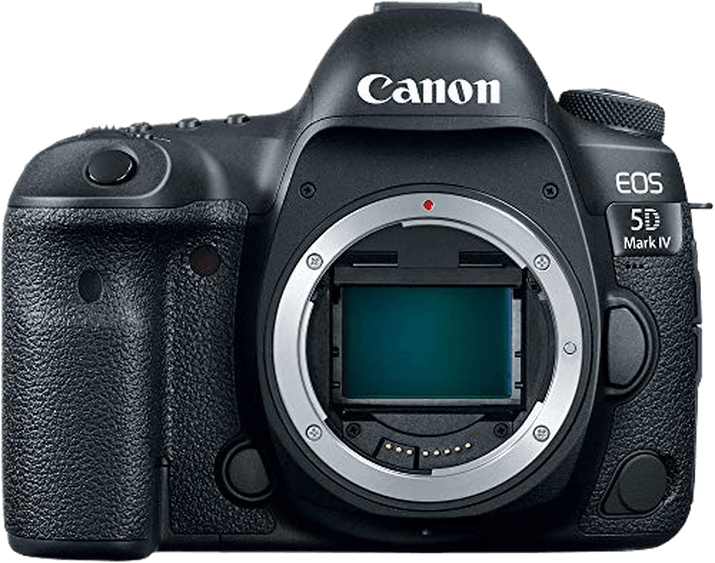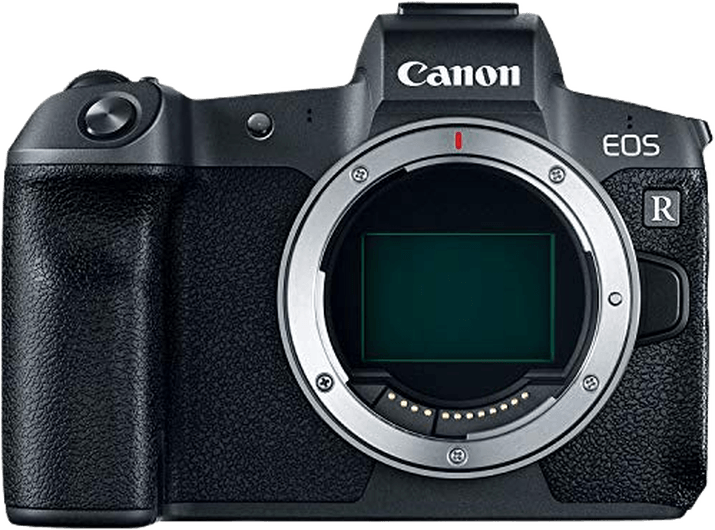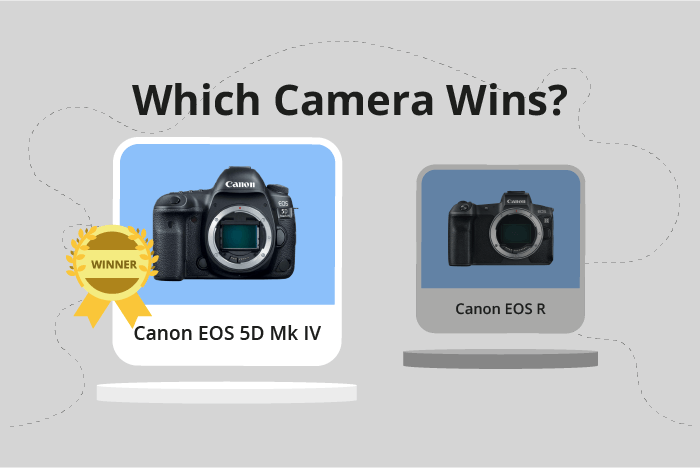Canon EOS 5D Mark IV vs EOS R Comparison
Canon EOS 5D Mark IV

Canon EOS R

The Canon EOS 5D Mark IV slightly edges out the Canon EOS R with a score of 75/100 to 74/100. Both cameras share similarities, such as being part of the Canon EOS family and having similar release dates.
The 5D Mark IV, a DSLR camera, boasts a larger body size of 151 x 116 x 76mm and a heavier weight of 890g. This makes it more durable and suitable for professionals seeking a robust camera.
On the other hand, the EOS R, a mirrorless camera, features a more compact size of 136 x 98 x 84mm and a lighter weight of 485g. This makes it a more portable and travel-friendly option. Additionally, the EOS R has a lower launch price of $2300 compared to the 5D Mark IV’s $3500.
Despite their differences, both cameras offer excellent performance and cater to different needs within the photography market.
Canon EOS 5D Mark IV vs EOS R Overview and Optics
The Canon EOS 5D Mark IV outperforms the Canon EOS R in optics with a score of 76/100 compared to 73/100. Both cameras share several specifications, including a 30-megapixel range, CMOS sensor type, full-frame sensor size, and the absence of image stabilization. Despite these similarities, the 5D Mark IV has a slight edge in certain aspects.
One advantage of the 5D Mark IV is its higher DXOMARK sensor score of 91, compared to the EOS R’s 89. This difference indicates that the 5D Mark IV has a superior sensor performance, resulting in better image quality. Additionally, the 5D Mark IV utilizes the Canon EF lens mount, which offers a vast selection of lenses. This extensive lens compatibility provides photographers with more options and flexibility in their photography.
On the other hand, the EOS R has a faster shooting speed of 8 frames per second (fps) compared to the 5D Mark IV’s 7 fps. This increased speed allows the EOS R to capture fast-moving subjects more effectively. Furthermore, the EOS R features the newer Canon RF lens mount, which supports the latest RF lenses designed for optimal performance with mirrorless cameras.
While both cameras offer excellent optics, the Canon EOS 5D Mark IV emerges as the winner due to its higher sensor score and extensive lens compatibility. However, the Canon EOS R remains a strong contender with its faster shooting speed and support for the latest RF lenses. Ultimately, the choice between these two cameras depends on the photographer’s preferences and specific needs.
Canon EOS 5D Mark IV vs EOS R Video Performance
The Canon EOS 5D Mark IV outperforms the Canon EOS R in video capabilities, with a video score of 91/100 compared to the EOS R’s 70/100. Both cameras share some common specifications, including 4K maximum video resolution and built-in time-lapse functionality.
The 5D Mark IV surpasses the EOS R in several aspects. Firstly, it has a higher maximum video dimension of 4096 x 2160, compared to the EOS R’s 3840 x 2160. This difference allows the 5D Mark IV to capture more detailed and sharper footage. Secondly, the 5D Mark IV’s maximum video frame rate is significantly higher at 120fps, while the EOS R only reaches 30fps. The higher frame rate enables the 5D Mark IV to record smoother videos and produce better results in slow-motion footage.
On the other hand, the EOS R does not outshine the 5D Mark IV in any specific video-related specifications. Both cameras share the same 4K video resolution and time-lapse functionality, but the EOS R falls behind in terms of video dimensions and frame rate.
Taking these factors into account, the Canon EOS 5D Mark IV proves to be the superior choice for videographers, offering higher video dimensions and a better frame rate. While the Canon EOS R still provides decent video quality with 4K resolution and time-lapse functionality, it cannot compete with the 5D Mark IV in terms of overall video performance.
Canon EOS 5D Mark IV vs EOS R Features and Benefits
The Canon EOS R outperforms the Canon EOS 5D Mark IV in features, scoring 87/100 compared to the 5D Mark IV’s 74/100. Both cameras share some specifications, including a 3.2-inch screen size, touchscreen capabilities, and Wi-Fi connectivity. However, the EOS R excels in certain aspects, while the 5D Mark IV has its own advantages.
The EOS R has a higher screen resolution at 2,100,000 dots, compared to the 5D Mark IV’s 1,620,000 dots. This results in a clearer and sharper display on the EOS R. Additionally, the EOS R features a flip screen, which enhances its versatility for various shooting angles and situations. Furthermore, the EOS R supports Bluetooth connectivity, allowing for seamless pairing with compatible devices.
On the other hand, the 5D Mark IV possesses a GPS feature, which the EOS R lacks. This enables the 5D Mark IV to geotag images, providing location information for photographers who need to track or reference their shooting locations.
In comparing the two cameras, the Canon EOS R offers superior features, including a higher screen resolution, flip screen, and Bluetooth connectivity. These enhancements contribute to its higher feature score. Conversely, the 5D Mark IV’s advantage lies in its GPS functionality, which may be important for certain users. Ultimately, the choice between the two cameras depends on the specific needs and preferences of the photographer.
Canon EOS 5D Mark IV vs EOS R Storage and Battery
The Canon EOS 5D Mark IV outperforms the Canon EOS R in storage and battery with a score of 71/100, while the EOS R has a score of 35/100. Both cameras share common specifications: they accept SD/SDHC/SDXC memory cards and use the LP-E6N battery type.
The 5D Mark IV excels with two memory card slots, supporting both UHS-I compatible SD cards and Compact Flash cards. Additionally, it has a longer battery life, providing 900 shots per charge. In contrast, the EOS R has only one memory card slot, but it is UHS-II compatible, allowing for faster data transfer. Its battery life is shorter, offering 370 shots per charge. However, the EOS R has the advantage of USB charging, which the 5D Mark IV lacks.
Considering these factors, the Canon EOS 5D Mark IV proves to be superior in terms of storage and battery life, while the Canon EOS R offers the convenience of USB charging and faster memory card compatibility.
Canon EOS 5D Mark IV vs EOS R – Our Verdict
Are you still undecided about which camera is right for you? Have a look at these popular comparisons that feature the Canon EOS 5D Mark IV or the Canon EOS R:

